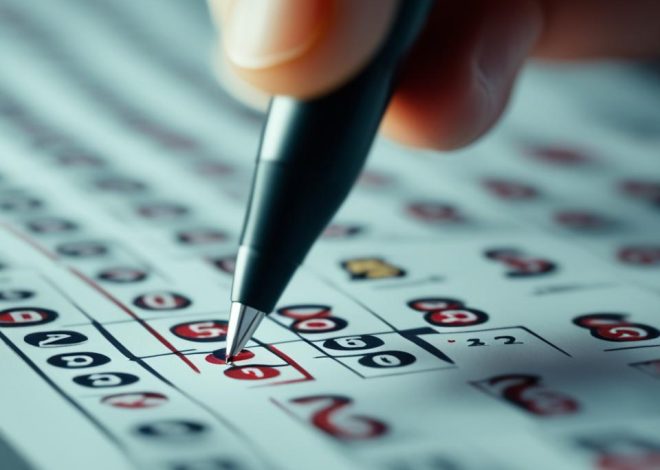
How Many Cards Are Dealt in Baccarat? Complete Guide
Baccarat is a captivating casino game that has captivated players for centuries. At the heart of this classic card game lies a fundamental question: how many cards are dealt in baccarat? This comprehensive guide delves into the intriguing world of baccarat, focusing on the key details surrounding the number of cards dealt in this timeless game of chance.
Readers will discover the standard deck size used in baccarat, the unique card distribution in the Punto Banco variation, the meticulous dealing procedures, and the overall card values that govern this captivating game. Additionally, the article explores related topics such as the number of decks used, the table layout, and the fundamental rules that make baccarat a perennial favorite among gambling enthusiasts.
By the end of this guide, you will have a thorough understanding of the card dynamics that make baccarat a truly fascinating and engaging card game. Whether you’re a seasoned baccarat player or just starting to explore this captivating casino offering, this complete guide will equip you with the knowledge to fully appreciate the nuances of how many cards in baccarat, baccarat card rules, baccarat deck size, baccarat dealing procedures, baccarat card values, punto banco card distribution, number of decks in baccarat, and the baccarat table layout.
Discover the latest insights in the world of baccarat with in-depth articles provided by honmamon-s.com
Baccarat: A Classic Card Game
Baccarat is a centuries-old baccarat history that has captivated gamblers and casino enthusiasts worldwide. Originating in the 15th century in Italy, the baccarat origins quickly spread to France, where it gained widespread popularity among the European aristocracy. Over the years, baccarat has evolved, with various versions emerging, including the popular Punto Banco variation.
Tracing the Origins of Baccarat
The roots of baccarat can be traced back to the 15th century in Italy, where the game was first played in the Italian county of Macchia di Vallerano. From there, baccarat history shows that the game made its way to France, where it gained immense popularity among the French nobility, becoming a favored pastime of the European elite.
Baccarat’s Enduring Popularity
Despite its centuries-old history, baccarat has maintained its baccarat popularity as a captivating and engaging casino game. The game’s simplicity, combined with the thrill of high-stakes betting, has made it a favorite among both casual and seasoned gamblers. Over the years, baccarat has evolved, with various versions emerging, each with its own unique rules and characteristics, further contributing to its enduring appeal.
Punto Banco: The Most Common Baccarat Variation
Punto Banco, also known as American Baccarat, is the most widely played variation of the popular casino game. In this version, the casino acts as the bank, and players wager on whether the “player” hand or the “banker” hand will be closer to a value of nine. The punto banco baccarat gameplay involves the dealer drawing additional cards based on predetermined rules, with the goal of determining the winning hand.
Understanding the Punto Banco Gameplay
The punto banco gameplay in baccarat is centered around the competition between the “player” hand and the “banker” hand. Players place their bets on which of these two hands will be closer to a value of nine. The dealer is responsible for drawing additional cards according to a set of established rules, ultimately determining the winning hand.
Baccarat offers a range of baccarat variations, with Punto Banco being the most prevalent and widely enjoyed version of the game. This variation’s straightforward gameplay and the casino’s role as the bank have contributed to its enduring popularity among both novice and experienced gamblers.
Baccarat Card Rules
Baccarat has a relatively straightforward set of baccarat card rules that govern the game. The baccarat card values are ranked based on their face value, with Aces worth 1 point, face cards (Jack, Queen, King) worth 0 points, and all other cards worth their numerical value. The goal in baccarat is to get a hand value as close to 9 as possible, with the highest possible hand being a “natural” of 9 points.
Card Values in Baccarat
The baccarat card values are a fundamental aspect of the game, as they determine the outcome of each hand. Aces are worth 1 point, face cards (Jack, Queen, King) are worth 0 points, and all other cards are valued at their numerical face value. This simplified scoring system makes it easy for players to keep track of the card values and calculate their hand totals.
The Role of the Banker and Player Hands
In baccarat, the baccarat banker and player hands play a crucial role in the overall gameplay. Players can wager on whether the “player” hand or the “banker” hand will be closer to a value of 9. The dealer draws additional cards based on predetermined rules, with the goal of determining the winning hand.
how many cards in baccarat
When it comes to the game of baccarat, the standard deck size is a crucial aspect to understand. The standard baccarat deck consists of 52 cards, mirroring the traditional playing card deck. This 52-card setup is a foundational element that underpins the gameplay and rules of baccarat.
The Standard Baccarat Deck Size
In the most widely played variation of baccarat, Punto Banco, the dealer utilizes either a single deck or multiple decks, typically ranging from six to eight decks. The use of multiple decks in Punto Banco is a common practice, as it helps to increase the randomness and unpredictability of the card distribution, adding an extra layer of excitement and challenge for players.
Card Distribution in Punto Banco
The card distribution in the Punto Banco variation of baccarat follows a specific set of rules. The dealer deals two cards each to the “player” and “banker” hands, with the goal of determining which hand is closest to a value of 9. Depending on the initial card values, additional cards may be drawn according to the established baccarat drawing rules, further shaping the outcome of the game.
Baccarat Dealing Procedures
The baccarat dealing procedures are an essential aspect of the game, as they ensure the smooth flow and fairness of the play. In the Punto Banco variation, the baccarat dealer plays a pivotal role in managing the game’s progression and adhering to the established rules.
The Role of the Dealer
The baccarat dealer is responsible for a variety of tasks, including dealing the cards, drawing additional cards based on the predetermined rules, and ultimately determining the winning hand. The dealer’s expertise and attention to detail are crucial in maintaining the integrity of the game and providing a seamless experience for the players.
Shuffling and Burning Cards
Prior to the start of each round, the dealer will shuffle and burn the cards to ensure a random and unpredictable outcome. The shuffling and burning procedures are an important part of the baccarat dealing procedures, as they contribute to the game’s fairness and prevent any potential manipulation of the outcome.
Number of Decks in Baccarat
The number of decks used in baccarat can vary depending on the specific casino and the game variation. In the Punto Banco version, which is the most common baccarat game, casinos typically use either a single deck or multiple decks, usually ranging from six to eight decks.
Single vs. Multiple Deck Games
Single deck baccarat games are less common these days, as they can be more susceptible to card counting strategies. However, some players still prefer the single deck format, as it can offer a slightly lower house edge compared to multiple deck games. On the other hand, multiple deck baccarat games, often featuring six to eight decks, are more widely available in most casinos. These larger deck configurations can help mitigate the risk of card counting, making the game less vulnerable to skilled players.
Ultimately, the choice between single or multiple deck baccarat games often comes down to personal preference and the specific rules and odds offered by the casino. Players should familiarize themselves with the number of decks used in the baccarat games they choose to play, as it can impact the overall strategy and house edge.
Baccarat Table Layout
The baccarat table layout is designed to facilitate the game’s smooth progression and the placement of bets. In a typical baccarat table, the design features a semicircular arrangement with designated areas for the player and banker hands, as well as areas for various betting areas.
Understanding the Baccarat Table Design
The baccarat table design is characterized by its unique layout, which helps players easily navigate the game. The table is typically wider than a standard blackjack or roulette table, allowing for the placement of multiple betting spots and the designation of the player and banker hands.
Player Positions and Betting Areas
The baccarat player positions are arranged in a semicircle around the table, with each player having their own designated betting area. These betting areas are clearly marked and labeled, making it easy for players to place their wagers on the player hand, the banker hand, or the tie bet.
Card Values and Scoring
In the captivating game of baccarat, the card values and scoring system are straightforward and integral to the gameplay. The cards are ranked based on their face value, with Aces worth 1 point, face cards (Jack, Queen, King) worth 0 points, and all other cards worth their numerical value. The primary objective in baccarat is to achieve a hand value as close to 9 as possible, with the highest possible hand being a natural of 9 points.
The Baccarat Scoring System
The baccarat scoring system is designed to determine the winning hand. Each player and banker hand is evaluated independently, and the hand closest to 9 points wins the round. If both hands have the same value, it results in a tie outcome. The scoring is calculated by adding the values of the cards in a hand, with the tens digit being discarded. For example, a hand of 7 and 8 would have a total value of 5 (7 + 8 = 15, discarding the tens digit).
Natural Hands and Tie Outcomes
In baccarat, a natural hand refers to a two-card hand with a value of 8 or 9 points. These natural hands are the highest possible scores in the game and automatically win the round, regardless of the opponent’s hand. However, if both the player and banker hands are natural hands with the same value, the result is a tie outcome, and bets are returned to the players.
Baccarat Strategies
While baccarat is primarily a game of chance, there are various baccarat betting strategies and approaches that players can employ to potentially improve their odds and enhance their gaming experience. From basic baccarat strategies to more advanced strategies and card counting techniques, understanding the different options can help players make informed decisions and potentially maximize their chances of success.
Basic Baccarat Betting Strategies
One of the most straightforward baccarat basic strategies is the Martingale system, which involves doubling the bet after a loss in an attempt to recoup losses and eventually turn a profit. Another popular strategy is the Paroli system, which involves increasing the bet after a win, with the goal of capitalizing on streaks of luck.
Advanced Strategies and Card Counting
For more experienced players, baccarat advanced strategies and card counting techniques can be employed. Card counting, while not as effective in baccarat as in blackjack, can still provide players with valuable insights into the distribution of cards and the potential outcomes of the game. Additionally, some players may opt for betting systems that prioritize prudent bankroll management and disciplined betting patterns to mitigate risk and maximize long-term profitability.
Baccarat Etiquette and Rules
Baccarat, like many casino games, has its own set of etiquette and rules that players should be aware of to ensure a smooth and enjoyable gaming experience. Adhering to proper baccarat etiquette and understanding the baccarat rules and regulations can enhance the overall atmosphere at the table and contribute to a positive experience for all participants.
Table Etiquette and Behavior
When playing baccarat, players are expected to exhibit a certain level of decorum and respect for their fellow players and the casino staff. This includes avoiding disruptive or loud behavior, refraining from using mobile devices excessively, and respecting the pace of the game. Baccarat table behavior also involves being mindful of the personal space of other players and avoiding any actions that could be perceived as intrusive or unsportsmanlike.
Common Baccarat Rules and Regulations
In addition to the baccarat etiquette, players should familiarize themselves with the game’s fundamental rules and regulations. These include understanding the card values, the role of the banker and player hands, and the various betting options available. Adhering to the established rules, such as the drawing rules for the third card, is crucial for ensuring a fair and consistent gameplay experience.
Baccarat Variations
While the Punto Banco variation is the most widely played form of baccarat, there are other notable variations of the game that have their own unique characteristics and rules. Two such variations are Chemin de Fer and Baccarat Banque.
Chemin de Fer
The Chemin de Fer version of baccarat is particularly popular in Europe and is known for its more interactive gameplay. In this variation, the “banker” role rotates among the players, with each player having the opportunity to deal the cards and act as the banker. The game also features a more active decision-making process, as players are allowed to choose whether to draw a third card or stand, adding an extra layer of strategy to the gameplay.
Baccarat Banque
Another distinct baccarat variation is Baccarat Banque, which is often found in high-stakes VIP rooms and private gaming salons. In this version, the “banker” role is fixed, and the players wager against the banker, rather than each other. Baccarat Banque is known for its more exclusive and sophisticated atmosphere, appealing to experienced baccarat enthusiasts who seek a more intimate and challenging gaming experience.
Online Baccarat
The rise of online gambling has significantly impacted the world of baccarat, making this classic casino game more accessible to players across the globe. Online baccarat has become increasingly popular, offering players the convenience of enjoying this captivating game from the comfort of their own homes.
The Rise of Online Baccarat
The surge in online baccarat can be attributed to several factors, including the growing acceptance and accessibility of online casinos. With the advancement of technology, players can now access a wide range of baccarat variants, including the traditional Punto Banco, directly through their computers or mobile devices. This has revolutionized the gaming experience, allowing players to immerse themselves in the thrill of baccarat without having to physically visit a casino.
Live Dealer Baccarat Games
Furthering the appeal of online baccarat, the introduction of live dealer games has added a new layer of authenticity and excitement to the digital gaming experience. Live dealer baccarat features real-time video streams of professional dealers, providing players with the feeling of being in a physical casino without the need to leave their homes. This innovative approach has attracted a growing number of players who desire the social interaction and traditional casino atmosphere while enjoying the convenience of online gaming.
Conclusion
In conclusion, this comprehensive guide has provided a detailed exploration of the intricacies surrounding the number of cards dealt in baccarat, a classic and captivating casino game. Readers have learned about the standard baccarat game overview, the card distribution in the Punto Banco variation, the dealing procedures, and the overall card values that govern this game of chance.
The key takeaways from this article include the understanding of the standard baccarat deck size, the card ranking system, and the various dealing protocols that are fundamental to the game. Additionally, readers have gained insights into the different baccarat variations, the table layout, and the strategies that can be employed to potentially enhance their gaming experience.
As a timeless casino classic, baccarat continues to captivate players worldwide with its alluring combination of simplicity and excitement. By mastering the nuances of card distribution and the game’s mechanics, players can immerse themselves in the thrill of this dynamic card game and potentially improve their chances of success.


